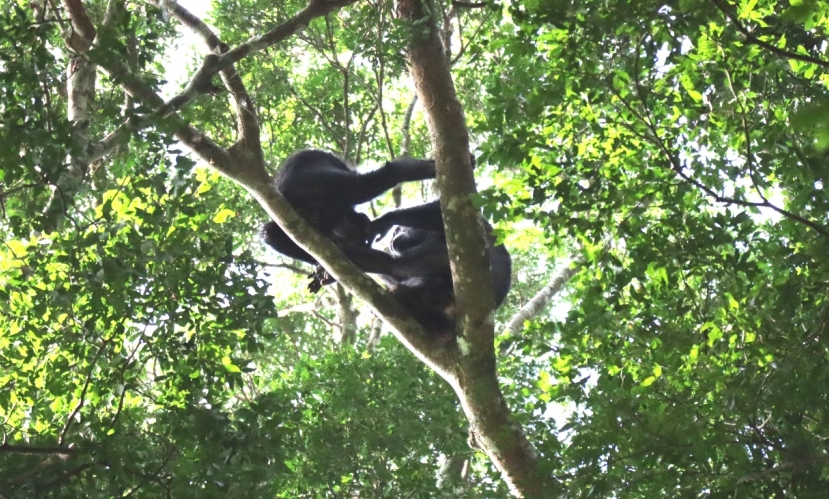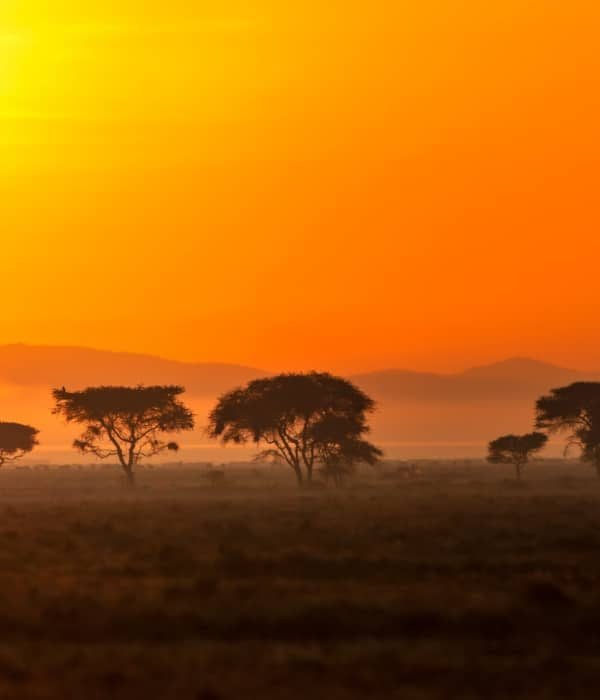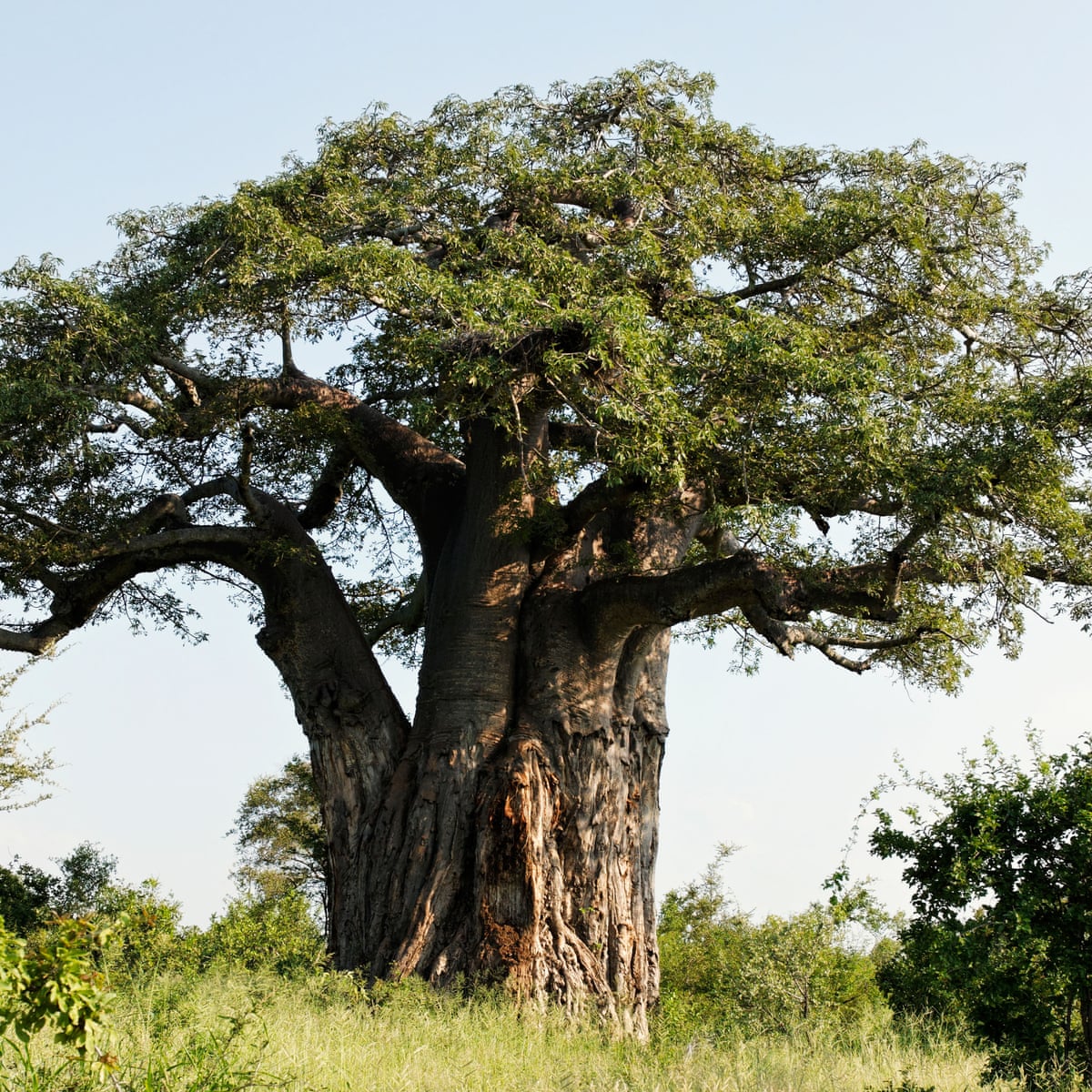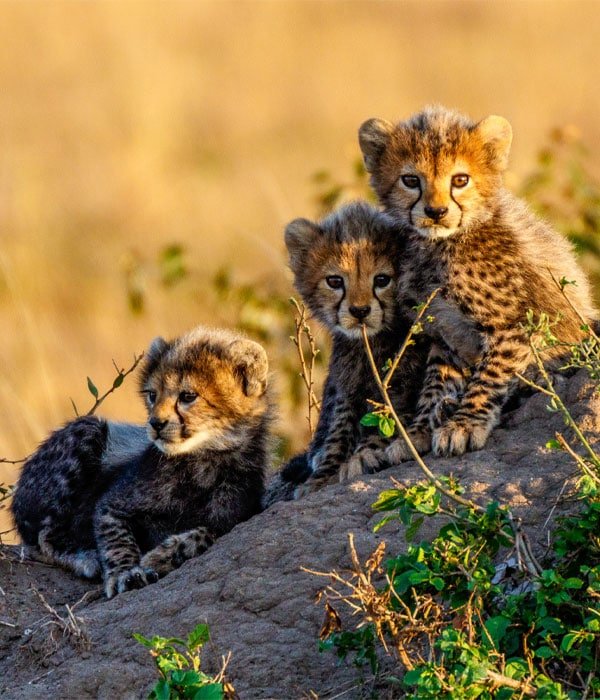Lost in Lush: Exploring Budongo's Giant Mahogany Wonderland

If you haven't had the chance to visit Budongo Forest Reserve yet, you're in for a treat. This beautiful forest is home to some of the world's most impressive trees and wildlife. In particular, the Giant Mahogany trees are a highlight that you won't want to miss. But beyond their awe-inspiring size, there are many reasons why these trees and the forest itself are so important. Here, we'll give an overview of Budongo Forest Reserve and the Giant Mahogany trees and explain the importance of conserving natural forests.
Overview of Budongo Forest Reserve and the Giant Mahogany trees.
Budongo Forest Reserve is located in Uganda and covers an area of approximately 825 square kilometres. It is home to over 600 chimpanzees and many other mammal and bird species. But what sets this forest apart is the presence of the magnificent Giant Mahogany trees. These trees, which can grow up to 60 meters tall and have a diameter of 2 meters, play an important role in the forest ecosystem. They provide habitat for wildlife, stabilize the soil, and help regulate the local climate. In addition, mahogany wood is highly valued for its durability and beauty, making it a prime target for illegal logging.
The importance of conserving natural forests.
Conserving natural forests like Budongo is crucial for many reasons. First and foremost, they provide habitat for countless species of plants and animals, many of which are endangered or even at risk of extinction. These forests also play a critical role in regulating the Earth's climate and water cycles and providing important ecosystem services like water filtration and soil stabilization. In addition, forests like Budongo are a source of livelihood for many local communities, providing them with food, medicine, and other resources.
The Giant Mahogany trees and Budongo Forest Reserve as a whole are not only beautiful but also incredibly important. We must do everything possible to conserve natural forests like this one for future generations to enjoy and benefit.
Getting There
If you want to experience the beauty of Budongo Forest Reserve and see the majestic Giant Mahogany trees for yourself, you'll need to know how to get there. But don't worry, it's worth the trip! In this section, we'll cover everything you need to know about getting to Budongo and exploring the reserve.
How to get to Budongo Forest Reserve
Masindi is the closest major city to Budongo Forest Reserve, about 28 kilometres away. If you're flying to Uganda, you'll likely arrive at Entebbe International Airport, approximately 200 kilometres from the reserve. You can rent a car or take public transportation to Masindi and the reserve from there.
Recommended transport options
While you can certainly take public transportation to Budongo, we recommend hiring a driver or renting a car. This will give you greater flexibility and control over your schedule and make it easier to get around once you're at the reserve. There are several car rental agencies in Uganda, and many offer guided tours of Budongo Forest Reserve.
The costs involved.
Of course, travelling to Budongo Forest Reserve will involve some costs. Here's a rough breakdown of what you can expect to pay:
- Flights to Entebbe International Airport: prices vary depending on your departure location and other factors, but expect to pay around $500-$800 per person for a round-trip ticket.
- Car rental: prices vary depending on the type of vehicle you choose and the rental period, but expect to pay around $80-$150 per day.
- Guided tours: prices vary depending on the length of the tour and the specific activities included, but expect to pay around $50-$100 per person per day.
While these costs may seem a bit high, remember that the experience of exploring Budongo Forest Reserve and seeing the Giant Mahogany trees in person is truly priceless. Plus, by travelling sustainably and supporting conservation efforts, you'll positively impact the local community and the environment.

Choosing the Right Guide
One of the most important decisions when planning a trip to Budongo Forest Reserve is choosing the right guide. A good guide can make all the difference in your experience, from enhancing your understanding of the local flora and fauna to the best spots for viewing the Giant Mahogany trees. Here's what you need to know to choose the perfect guide for your trip.
Why it is important to choose the right guide
A knowledgeable and experienced guide can offer you a wealth of information about the forest reserve and its inhabitants. They can help you spot wildlife you might not have noticed on your own and answer any questions about the area's ecosystem and conservation efforts. Additionally, a good guide will prioritize your safety and ensure a comfortable and enjoyable experience in the forest.
What to look for in a guide
When choosing a guide, the most important factor to consider is their experience and knowledge of the area. Look for someone who has spent significant time in Budongo Forest Reserve and knows the terrain well. Additionally, ensure they have a passion for conservation and a deep understanding of the importance of sustainable travel.
Factors to consider when hiring a guide
When hiring a guide, it's important to consider a few factors. Firstly, ensure that they are licensed and trained in first aid. Secondly, ask for references or read reviews from previous clients to get an idea of their track record. Finally, consider their communication and language skills. You want a guide who can communicate clearly and effectively throughout your trip.
By choosing the right guide for your trip to Budongo Forest Reserve, you'll have an unforgettable experience in one of Uganda's most beautiful natural landscapes. Remember, a good guide is an investment in your safety, enjoyment, and understanding of the area, so take your time and choose wisely.

The Experience
When planning a trip to Budongo Forest Reserve, you can ensure a truly unforgettable experience by choosing the right guide. With a knowledgeable and experienced guide, you can enhance your understanding and appreciation of the reserve's natural beauty. Here's what to expect during your tour and how to ensure a safe and enjoyable experience.
What to expect during the tour
During your tour of the Budongo Forest Reserve, your guide will take you to the best spots for viewing the wildlife, flora, and fauna. They will be able to offer you insights into the ecosystem and conservation efforts in the area. You may even have the opportunity to spot chimpanzees, one of the main attractions of the reserve. Your guide will ensure a smooth and comfortable journey through the forest and make the experience as enjoyable as possible.
Recommended gear for the tour
Make sure that you come prepared for your tour by bringing the right gear. Wear comfortable and sturdy walking shoes as you will trek through the forest for several hours. Dress appropriately for the weather - the temperature in the forest can be cooler than in other parts of Uganda, and rain is always possible. Bring a hat, sunscreen, and insect repellent to protect yourself from the sun and bugs. You should also bring a camera to capture the stunning surroundings.
Safety precautions to take
Your safety is paramount during your tour of Budongo Forest Reserve. To ensure a safe trip, follow your guide's instructions. Stay with the group, and do not wander off on your own. Do not touch or disturb any of the wildlife or plants in the reserve. If you have any health concerns, inform your guide in advance so they can make appropriate accommodations.
By taking these precautions and choosing the right guide for your trip to Budongo Forest Reserve, you'll have a truly unforgettable experience that you'll remember for years to come.

The Giant Mahogany Trees
When you visit Budongo Forest Reserve, you'll have the opportunity to see one of its most impressive inhabitants – the giant mahogany trees. These trees are not only stunning to look at, but they also play a crucial role in the ecosystem of the reserve. Here's everything you need to know about these magnificent trees.
Facts about the Giant Mahogany Trees
As their name suggests, giant mahogany trees are some of the largest trees in the reserve. They can grow up to 50 meters tall and have a trunk measuring up to 2 meters in diameter. These trees are long-lived and can live for up to 200 years.
One of the standout features of the giant mahogany tree is its bark. The bark is smooth and grey when the tree is young, but as it matures, it becomes deeply furrowed and almost black.
Why they are a keystone species
Giant mahogany trees are considered a keystone species, meaning they play a crucial role in maintaining the overall health and biodiversity of the forest. These trees provide important habitat for many species of animals, including birds, insects, and mammals. They also help to maintain the soil moisture levels and nutrient content, which is essential for the survival of other plants in the forest.
In addition, mahogany trees are economically important, as their wood is highly valued for furniture and construction. Unfortunately, This has led to over-harvesting, so these trees are now considered endangered.
How to identify them
If you are interested in identifying giant mahogany trees during your trip to Budongo Forest Reserve, there are a few key features to look out for. As mentioned, these trees have a smooth, grey bark when young, which becomes deeply furrowed and black as they mature. They also have large, oval-shaped leaves that can grow up to 60 cm long.
If you are lucky enough to spot a giant mahogany tree during your tour, take some time to appreciate its size, beauty, and importance to the ecosystem. Learning more about these trees'll deepen your understanding and appreciation of the incredible natural world surrounding us.

Biodiversity
Are you planning a visit to Budongo Forest Reserve? Get ready to immerse yourself in a world of incredible biodiversity! There is so much to see and explore in this amazing natural environment, and one of the most remarkable aspects of the reserve is its incredible plant and animal diversity.
Biodiversity of the Budongo Forest
With its vast tracts of old-growth forest, Budongo Forest Reserve is home to diverse wildlife. The reserve is particularly well-known for its population of chimpanzees, among the world's most studied primates. In addition to these charismatic apes, visitors to Budongo Forest also have the chance to see various other mammals, including monkeys, duikers, and forest elephants.
The plant life in Budongo Forest Reserve is also incredibly diverse. The reserve is home to more than 465 species of trees and shrubs, including several large mahogany trees, which play a crucial role in maintaining the health and vibrancy of the entire forest ecosystem.
Different plant and animal species to look out for
During your visit to Budongo Forest Reserve, keep your eyes peeled for some of the amazing plant and animal species that call this place home. In addition to chimpanzees and forest elephants, keep an eye out for red-tailed monkeys, black-and-white colobus monkeys, and several different species of duiker.
As you explore the forest, take some time to appreciate the diverse plant species surrounding you. Some of the most impressive trees to look out for include the giant mahogany trees, which can grow up to 50 meters tall and are considered a keystone species within the forest.
A visit to Budongo Forest Reserve is an incredible opportunity to immerse yourself in a world of natural wonder and biodiversity. Whether you're interested in primates, elephants, or plant life, you're sure to be amazed by this unique ecosystem's incredible sights and sounds.

Conservation Efforts
If you plan a trip to Budongo Forest Reserve, you're in for a treat. The conservation efforts in this remarkable natural environment are helping preserve the incredible biodiversity for generations.
The importance of conservation
Conservation is essential for protecting the diverse array of plants and animals that call Budongo Forest Reserve home. Preserving the reserve's ecosystem is not only critical for the survival of these species but also for the health of the entire planet as a whole.
Conservation efforts in Budongo Forest
The Budongo Forest Conservation Field Station has supported conservation efforts in the reserve. The station researches the chimpanzees and other primates, plants, and other wildlife in the forest. This research helps inform conservation practices and ensures the reserve remains a healthy and vibrant ecosystem.
The Budongo Forest Conservation Field Station also collaborates with local communities and other organizations to promote sustainable forestry practices and reduce illegal logging, which can devastate the forest ecosystem.
How to support conservation efforts
You can get involved in supporting conservation efforts in Budongo Forest Reserve in many ways. One way is to visit the reserve and learn about plant and animal species. By supporting eco-tourism, you can help ensure that the reserve remains a protected area for years.
You can also support conservation efforts by donating to organizations like the Budongo Forest Conservation Field Station or purchasing sustainably grown or harvested products in the region. By doing so, you can help support the local economy while also contributing to preserving this unique and important ecosystem.
The conservation efforts in Budongo Forest Reserve are a testament to what can be achieved when people come together to protect our planet's natural resources. By getting involved and supporting conservation practices, we can all play a role in preserving the incredible biodiversity in this world.

Sustainable Tourism
If you plan a trip to Budongo Forest Reserve, you're in for a unique and memorable experience. The sustainable tourism practices in this remarkable natural environment are helping to preserve the incredible biodiversity for generations to come, and you can be a part of it.
How to be a responsible tourist
As a responsible tourist, there are several things you can do to support the sustainable tourism practices in Budongo Forest Reserve:
- Choose eco-friendly accommodations: When looking for a place to stay, choose lodges or camps that prioritize sustainability, such as using renewable energy sources or implementing water-saving measures.
- Respect wildlife and their habitats: It's important to keep a safe distance and not disturb the animals, as it can cause them to stress and disrupt their natural behaviour. Stay on designated paths or trails to minimize your impact on their natural habitat.
- Practice proper waste disposal: Make sure to dispose of your waste properly by recycling or using composting facilities where available. Avoid using single-use plastics, and bring your reusable water bottle instead.
- Support local businesses and communities: Purchase souvenirs and products from local vendors to support the local economy. By doing so, you can help to contribute to the preservation of this unique and important ecosystem.
- Consider offsetting your carbon footprint: You can minimize your environmental impact by offsetting your carbon emissions from travelling. Consider supporting certified organizations that focus on reforestation or renewable energy projects.
The opportunities for sustainable tourism are endless, and by becoming a responsible tourist, you can make a positive impact and help preserve the natural beauty and ecological significance of Budongo Forest Reserve.
